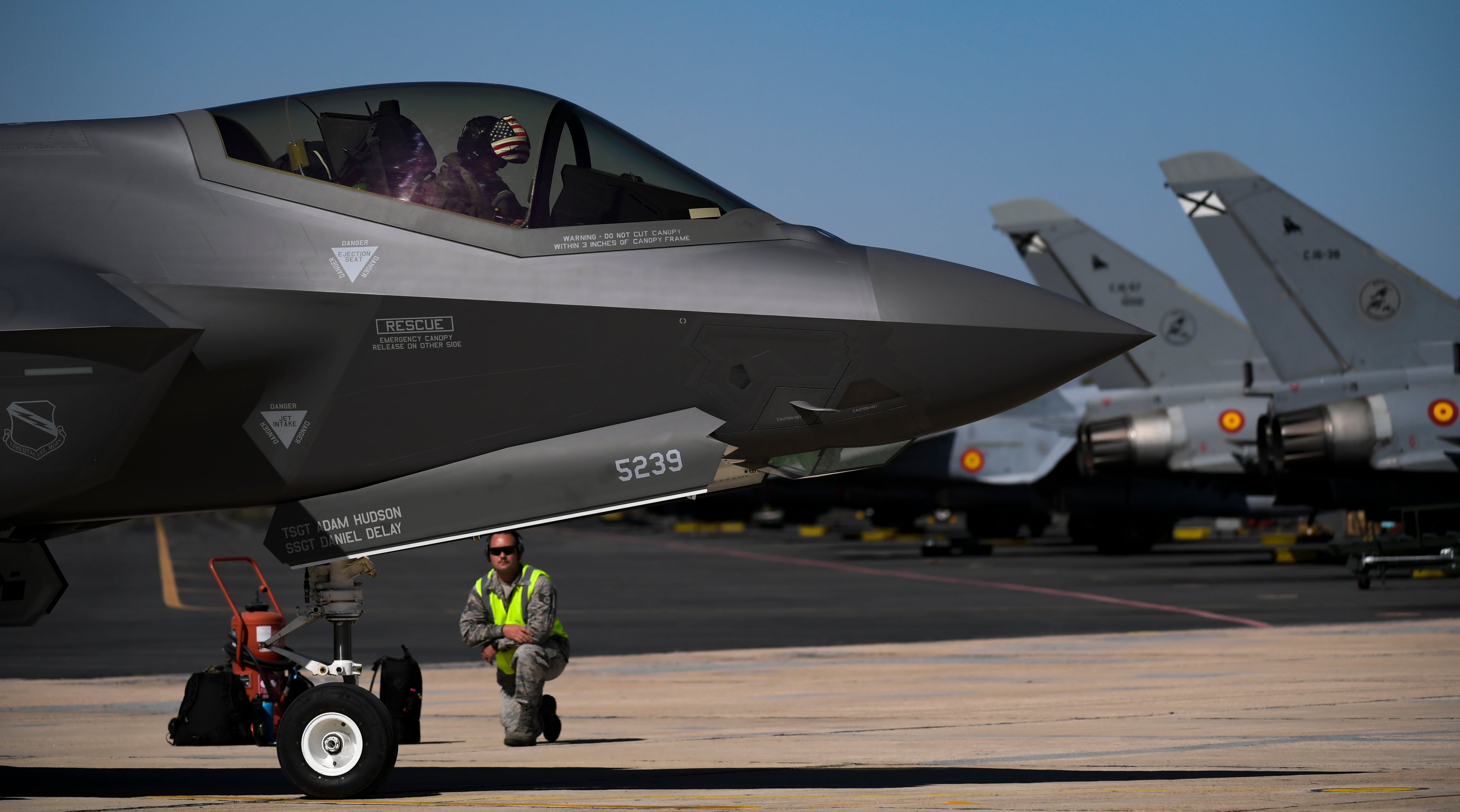Last month, Congress held an oversight and accountability hearing regarding the F-35 Joint Strike Fighter’s burdensome logistical IT system. The Department of Defense Office of Inspector General reported earlier this year that millions of additional dollars were spent in the form of labor hours by military personnel who manually tracked the plane’s spare parts since its electronic logistical system didn’t. The congressional review was undoubtedly warranted, especially as the F-35 program office phases in a newer system over the next two years to replace its legacy IT platform.
But noticeably absent from this testimony, was a more fulsome discussion (and understanding) about the affordability of the program and how both acquisition costs and the price to fly the aircraft are significantly trending downward at a time that matters most.
In an era of increased military competition against peer adversaries and during a period of tremendous budgetary constraints in the United States, incremental savings across a large enterprise such as the F-35 program matter. The Defense Department understands this well. It has smartly leveraged its buying power, driving down the cost of each F-35A to approximately $80 million one year earlier than planned — now costing taxpayers less than some of the less capable fourth-generation aircraft, and on a par with others. The F-15EX, for example, costs nearly $88 million, and gives our forces no help in a fifth-gen fight.
RELATED

Why spend more for less? This is critical because over the next five years, the number of F-35s purchased will more than double to approximately 1,200 aircraft. That translates to increased capacity and capability for the United States and its allies as they operate in the Indo-Pacific and European theaters.
Congress recognizes that the costs to acquire the aircraft have been significantly reduced, and it has now rightfully turned its attention to the costs associated with sustaining the aircraft. But most lawmakers missed the opportunity during July’s hearing to more fully explore a key statement made by the F-35′s prime contractor, Lockheed Martin.
Lockheed announced that it has reduced its share of the aircraft’s sustainability cost per flying hour over the past five years by nearly 40 percent, plummeting the costs to fly the aircraft to nearly $5,000 less each hour than earlier hourly costs.
The company says it has invested hundreds of millions of dollars to build state-of-the-art tools, analytics, machine learning and artificial intelligence, which has led to labor efficiency gains as well as improvements to supply response times and data quality. The company implemented robust asset management tools and robotic automation to eliminate manual tasks, while placing a concerted focus on improving the reliability of aircraft parts to meaningfully reduce future repair requirements and material costs.
This is significant because the number of hours flown each year will increase by approximately 140,000 hours over the next five years alone. Those savings add up.
And more can be done. The F-35′s manufacturer believes it can further drive down its cost share to fly the aircraft by approximately an additional 50 percent. This is all the more significant when considering that the military services and aircraft’s engine maker, Pratt & Whitney, are responsible for more than one-half of the total sustainment costs of the program.
If a similar level of savings can be achieved by the Air Force, Navy, Marine Corps, and Pratt & Whitney, those savings can be confidently reinvested back into the program to ensure enough aircraft are being procured to deter and, if necessary, fight our adversaries. As the military services and foreign countries consider future threats and the capabilities needed to impede adventuresome opponents, these savings matter.
These savings come at the same time the DoD reports that the aircraft’s mission-capable rate has increased from the mid-50th percentile to the low 70th percentile from just a couple of years ago. And further improvements in the aircraft’s mission-capable rate should be forthcoming as repair backlogs and mismatched spare parts are corrected by a new IT logistical system.
A theoretical military principle suggests that steady quantitative changes can lead to a sudden, qualitative leap. After many, many years of sustained focus to drive down F-35 costs, the program may be representative of that maxim and allow the Defense Department to fully realize the advantages of the F-35′s gamechanging technologies.
Steven P. Bucci is a visiting fellow at The Heritage Foundation. He previously served as a U.S. Army Special Forces officer and is a former deputy assistant secretary of defense for homeland defense. The Heritage Foundation takes no funding from any government. It does take donations from corporate entities, which average about 4 percent of their total funding in any given year. The think tank reports it does not take a position based on donations, nor do donors have editorial input.








